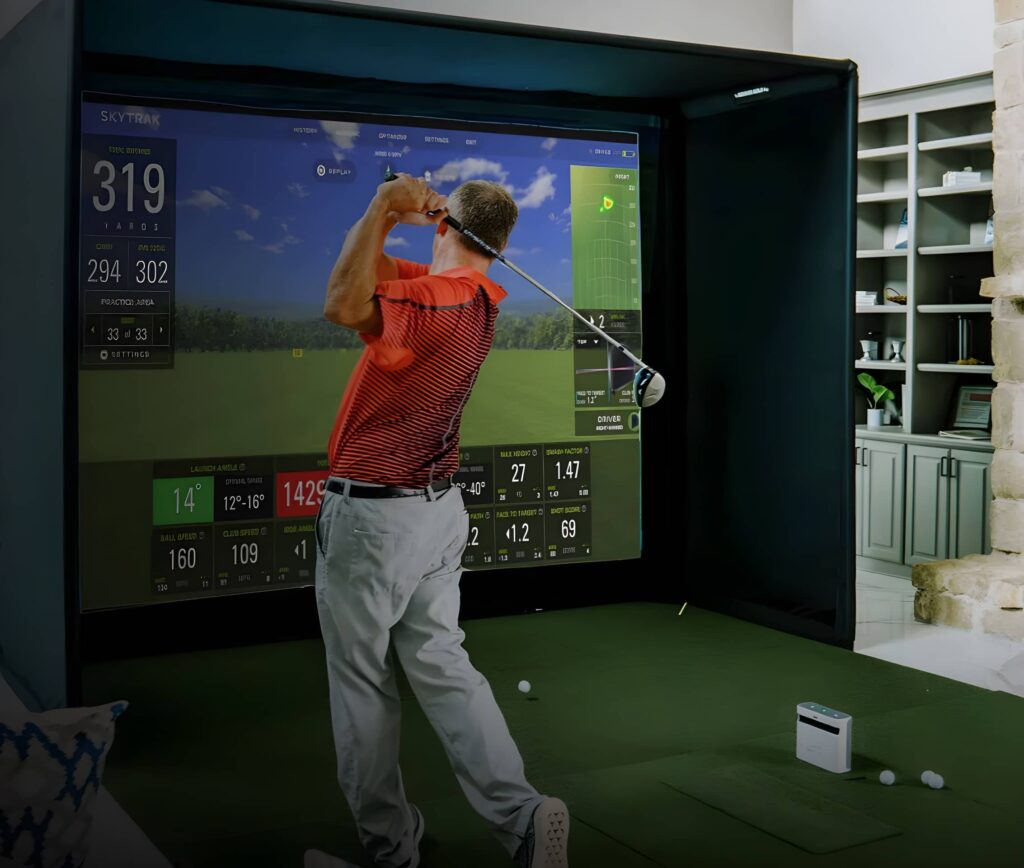Industry Expert Rene Delgado Explains How the Home Simulator Dream is More Accessible and Customisable Than Ever
The world of indoor golf is thriving like never before, creating a buzz among enthusiasts and industry leaders alike.

The growth has been nothing short of phenomenal, particularly over the past four years, positioning indoor golf as a prime player in the market.
Rene Delgado, the visionary Founder and CEO of The Indoor Golf Shop (TIGS), leads the charge in this booming industry.
Since launching his Texas-based business in 2017, Delgado has seen a meteoric rise.
What started as a modest venture now sprawls across 50,000 square feet north of Dallas, with an opulent showroom, “The Cabin,” set to open this summer.
“Since COVID, there’s been this huge influx of interest in all things golf,” Delgado said.
“Indoor golf in particular really saw hockey-stick growth during COVID and shortly thereafter.
We’re starting to see some normalisation this year. We’re still seeing decent growth but at a tamer level than before.”
Technology Has Opened the Floodgates
Technological advancements are a significant factor driving the surge in indoor golf’s popularity.
As technology evolves, it becomes more affordable, making it feasible to own a simulator setup for well under $1,000. This includes a launch monitor, mat, and net.
According to Delgado, “Information is now more readily available. Consumers are much more savvy and very value-driven.
The luxury market remains strong and agnostic toward cost. But the foundation, the mid-market, they’re getting much more savvy as consumers.”
Meeting Market Demand with Creative Solutions

The pandemic brought about unique challenges, especially with global supply chain issues.
However, Delgado and his team turned these challenges into opportunities by ramping up their manufacturing capabilities.
This proactive approach allowed them to control their supply chain and better support their customers.
“We looked at everything,” Delgado said. “We decided to become a reliable manufacturer of soft goods – premium impact screens, golf mats, simulator flooring, and more.
We manufacture our own enclosures and structures for both residential and commercial installations.
It’s lowered our cost basis, but it’s also allowed us to rapidly react to what consumers are looking for.”
Demystifying the Buying and Installation Process
With supply issues addressed, TIGS shifted focus entirely to the consumer experience.
The company starts by understanding the customer’s specific goals, whether for game improvement, training, entertainment, or a combination.
This customer-centric approach ensures they provide tailored solutions for every need.
“It’s all about understanding the motivation behind a customer’s want of a simulator,” Delgado said.
“Then, based on that and their situation, we can educate them based on the best options.”
Diverse Customer Needs and Solutions
TIGS caters to various customer types, from entry-level users to high-end custom design clients.
For the entry-level, a basic setup might include turf, a hitting net, and an entry-level launch monitor.
Mid-range customers often prefer a complete simulation experience with a screen and more sophisticated equipment.
“Then you have those who want full-blown simulation where they’re hitting the ball into the screen in front of them.
There are two kinds of those customers; There are DIY type individuals who want to buy the components from you and build out their own space.
Then there are people like me that want everything curated, a sim-in-a-box type customer.”
The high-end market involves a detailed process, from 2D/3D designs to custom manufacturing and installation.
These clients receive a personalised experience, often collaborating with designers and architects.
The Future of Indoor Golf
Predicting the future of indoor golf is challenging due to its rapid evolution. Artificial intelligence and multi-sport technology are emerging trends, allowing simulators to offer experiences beyond golf, such as baseball and soccer.
“I think the industry in general will see some consolidation in the space; some players exiting, others being acquired,” Delgado said.
“By early next year, the players and manufacturers will look different than they do today. But for consumers it’s only going to continue to get better.”
The upcoming golf league (TGL) is another exciting development that will likely attract new audiences to the sport and continue driving technological advancements.



